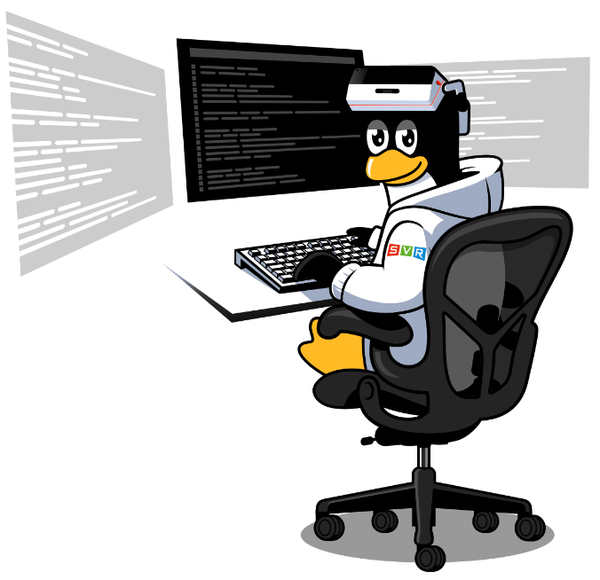1 Videos of the Review Unit
Here are some videos showing the Review Unit exterior, and peeking through the lenses with Simula running:
Though it's very hard to convey in these videos, the most important thing we can confirm is that the image quality is absolutely incredible. We've been telling people that Simula One pixel density is more than 3x better than the Valve Index, and nearly 2x better than the Quest 2. But the difference between stating these specs on paper and experiencing it first hand is pretty vast. We can't wait until our preorderers get to experience Linux VR Desktop this clearly themselves!
2 Display Interposer Received
How it all happened: last week we finally received our 2nd-iteration Display Interposer from PCBA.
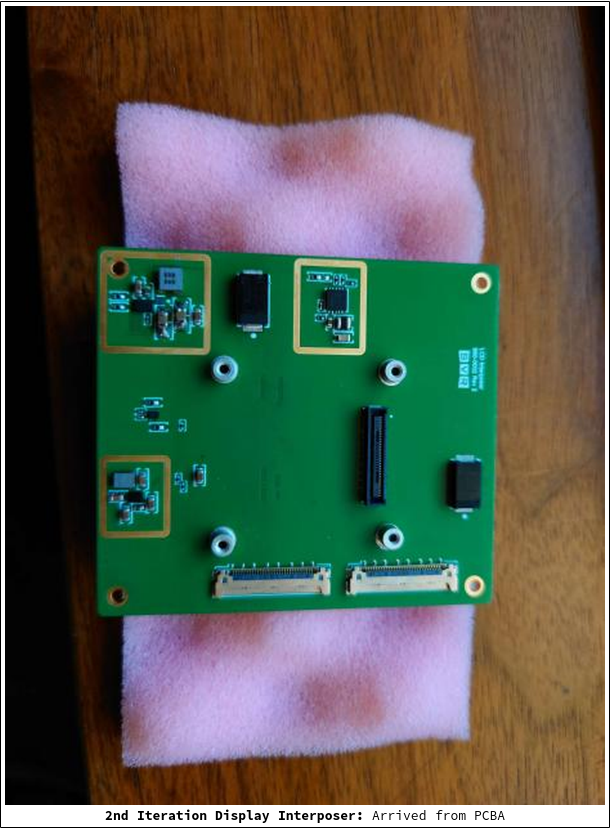
This was the final board we were missing in order to assemble our Review Unit.
3 Assembling our optics & headset
3.1 Boards
Attaching the boards to our headset was straightforward enough:
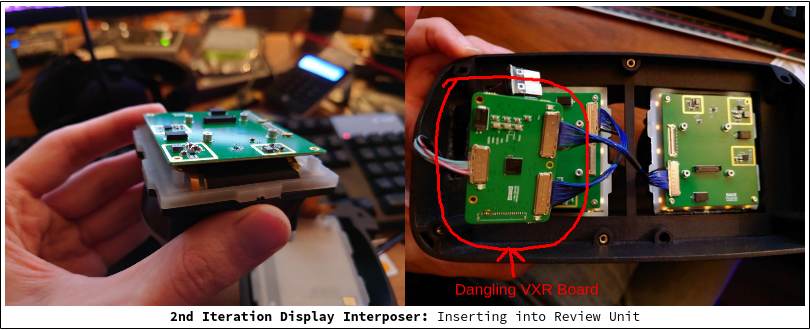
The one issue we had is with the dangling VXR board (circled in red), which needs to be properly mounted in order to prevent it from interacting with our cameras down the line.
3.2 Optics
To assemble Simula's optical system, we used our laminar flow bench to prevent dust from getting trapped into the lenses:
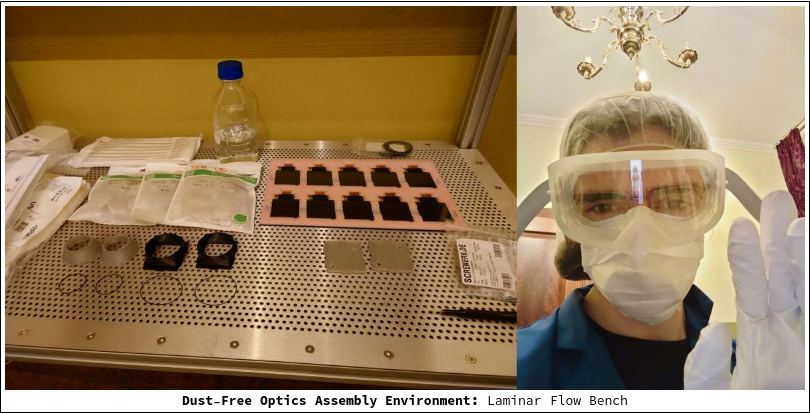
Here is the final result:
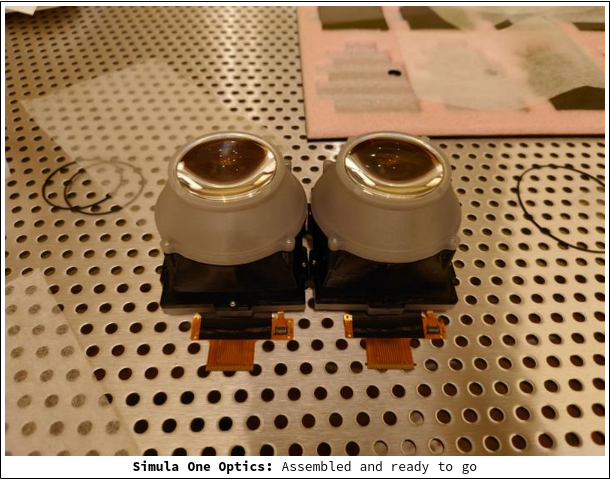
Though we ultimately got the optics to fit together, there were some things that need further iteration:
- Screws and o-ring's had trouble fitting
- Potential issues with lens tolerances (it feels as if they didn't slot in quite right).
We plan on shifting to glued lenses to get around these issues.
3.3 Tracking Module
We also added our Intel RealSense tracking module, which we're using as a temporary solution for positional tracking:
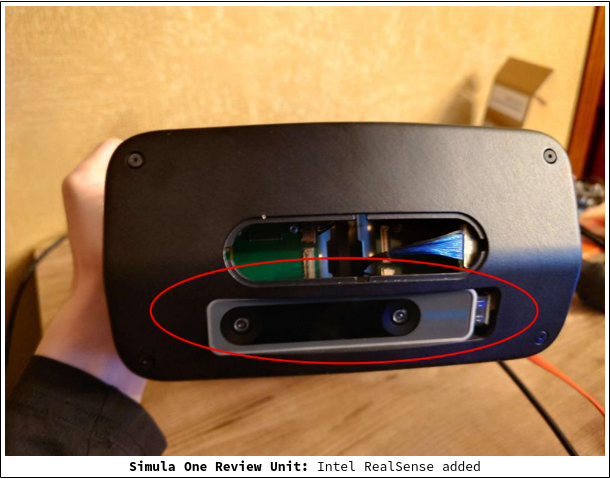
4 Enabling DSC for a 90Hz - 120 Hz refresh rate
The Simula One displays support a refresh rate of 90-120 Hz. (We're targetting 120 Hz ideally, but we might need to throttle it down to trade off for more battery life). Currently our Review Unit is operating at only 60 Hz, however, until we are able to initiate DSC on our VXR board.[1] We originally requested help from Synaptics to do this, but have gotten very little support.
So far, we've been able to enable DSC on an AMD host, but not our actual Intel compute unit. The process involves modifying display stream compression ratios (through modifications to Intel's display driver), and adjusting bits-per-pixel settings on our displays.
[1]: Recall that DSC is a form of "visually lossless" low-latency compression that allows for high definition displays to reduce their bandwidth demands, where "visually lossless" means the bandwidth reduction is entirely undetectable by viewers.
5 Improving Framerate
During our Review Unit test, we experienced low framerates of around 30FPS, which is far short of the 120FPS target we need to support our 90-120 Hz refresh rate. After reducing supersampling from 140% to 100% and enabling texture compression for the distortion shader, we were able to get framerates up to 60FPS (the max achievable at 60 Hz).
Though we have many optimizations to implement to get framerate up, the bulk of the issue lies in our optical distortion rendering (i.e. the rendering required to distort images in each eye so that they look correct to users looking through our lenses).
It's possible we might need to offload distortion to our FPGA, though it's premature at this point to know whether that is the best path forward.
6 Display Interposer i2c bug is fixed
We fixed an earlier issue with our Display Interposer's inability `i2c.write` on display initialization.
7 Mechanical Design Iteration
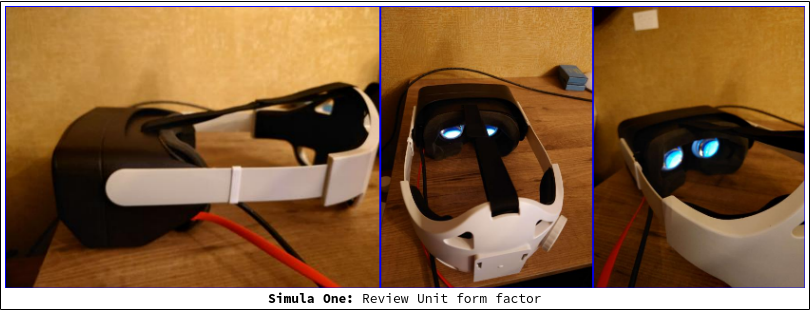
Our black Review Unit with white strap doesn't reflect its final form. Our headset exterior still needs more optimizations for comfort and style. In the short-run:
- There's some nose interferance that needs fixing with our front facial interface.
- The weight balance isn't quite right, though this will be improved when we add our compute pack to the back (right now our compute unit sits separate and dangling).
- We need more experimentation with different straps.
8 Huge milestone
While there is still much to do, this is a huge milestone for Simula! We've demonstrated for the first time that our core hardware is functional and integrating with our VR compositor. We look forward to unveiling more progress in the coming weeks to build on this. Things like:
- Adding cameras to our Review Unit, and demonstrating AR Mode
- Showing Simula running with DSC enabled at 120 FPS
- Improvements to headset comfort and styling (including IPD)
- ...and more
